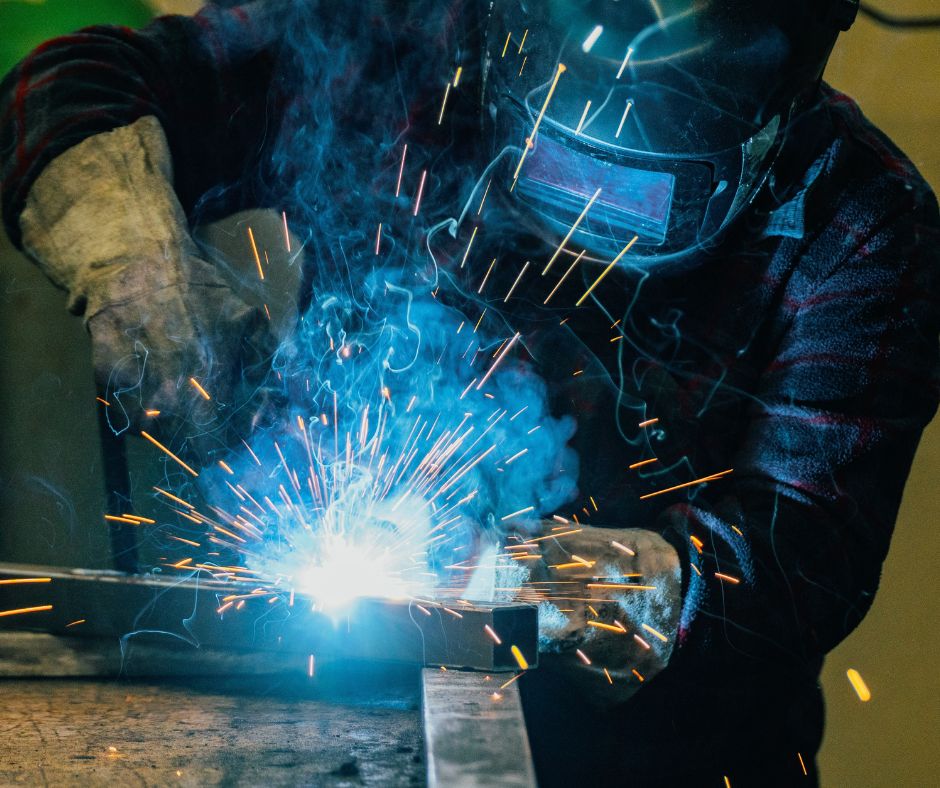Welding is crucial in construction, manufacturing, automotive repair, and countless other industries. Whether you’re exploring welding as a hobby or considering it as a career path, understanding the different types of welding and when to use them can help you choose the proper technique for your goals.
In this blog post, we’ll walk you through the different types of welding, their key features, typical applications, and things to consider before diving in.
If you’re just getting started, Stratford Career Institute offers an introductory welding course to help you explore the basics and decide whether welding is the right path for you.
What Are the Different Types of Welding?
Each type of welding has its strengths, challenges, and best-use scenarios. Some are better suited for high-strength structural work, while others are great for fine detail or precision.
By understanding the various methods, you can choose the one that aligns best with your project needs or the type of welding job you’re interested in pursuing. Here are four different types of welding.
Type 1: Shielded Metal Arc Welding (SMAW) – Stick Welding
Shielded metal arc welding, also called stick welding, is one of the oldest and most widely used welding methods. It is also one of the least expensive types of welding.
In stick welding, an electric current passes through a “stick” (a coated metal electrode). As the stick melts, it fuses the metals, while the outer coating creates a protective gas shield around the weld. This shield helps keep the weld strong by blocking out air and moisture.
Stick welding can be used indoors and outdoors and works well on rusty or dirty materials. That’s why it’s commonly used in construction, repair work, and on farms or job sites where conditions aren’t perfect.
However, it can take some practice to get the hang of it. The welds may not look as smooth as other methods, and you’ll need to replace the stick fairly often.
Type 2: Gas Metal Arc Welding (GMAW) – MIG Welding
Gas metal arc welding, or MIG welding, is one of the easiest types of welding to learn, making it an excellent option for beginners. In MIG welding, a wire feeds continuously through a welding gun while a gas protects the weld from air.
The machine does most of the work for you, so you can focus on guiding the torch and making smooth welds.
MIG welding is common in auto body repair shops, manufacturing, and home workshops. The equipment tends to be more expensive than stick welding, and the shielding gas means it’s not ideal for outdoor use where wind can blow the gas away.
Type 3: Flux-Cored Arc Welding (FCAW)
Flux-cored arc welding, or FCAW, is similar to MIG welding but has one key difference: instead of needing a separate gas tank, the wire used in FCAW has a special flux in the center that creates its own shield during welding. That means you can weld outdoors without worrying about a gas shield getting blown away.
These qualities make FCAW a favorite for construction sites, shipbuilding, and other heavy-duty outdoor work. It’s also commonly used for thicker metals and high-production jobs where speed matters.
It works well outdoors, can weld dirty or rusty materials, and is relatively easy to learn. However, it can produce more smoke and splatter than MIG or TIG welding, and the finished welds often need more cleanup. It’s also not as precise, so it’s not ideal for projects that require a clean, polished look.
Type 4: Gas Tungsten Arc Welding (GTAW) – TIG Welding
TIG welding, also called gas tungsten arc welding (GTAW), is one of the most precise welding methods out there. It uses a special metal tip that doesn’t melt, and you add the welding material by hand using a separate rod.
TIG welding is often used in industries where clean, high-quality welds are critical, like aerospace, automotive, and bicycle manufacturing.
If you’re new to welding, TIG is usually not the best place to start, because it requires good hand coordination and careful control of heat and filler material. It’s also slower than other methods, and the equipment can be expensive.
Types of Welding Jobs and Salary
Welding offers a variety of career paths, each with different skill levels, work environments, and earning potential. The type of welding job you pursue may depend on your training, interests, and willingness to work in specific industries.
Here are a few common welding careers and their typical working environments:
- Construction Welder—construction sites, bridges, and pipelines;
- Manufacturing Welder—factories, assembly lines, and industrial facilities;
- Underwater Welder—offshore rigs, ships, and underwater pipelines;
- Pipe Welder—oil fields, gas plants, and municipal water systems; and
- Welding Inspector—manufacturing plants, construction sites, and fieldwork
The salary can vary widely depending on location, experience, industry, and additional certifications. Some specialized roles, like underwater welding or aerospace fabrication, may pay significantly more but also demand rigorous training and safety requirements.
Learn More About Different Types of Welding
Stratford Career Institute’s online Welding course is a convenient way to explore welding basics at your own pace. While Stratford does not provide certification or state-licensed training, this course can help you:
- Understand the fundamentals of various welding techniques,
- Learn basic safety practices and equipment use,
- Explore the different types of welding jobs, and
- Decide whether welding is the right career or hobby for you.
If you’re curious about how to learn welding and want a flexible, affordable place to start, Stratford’s Welding course may be worth checking out. You’ll get self-guided materials, instructor support, and an educational introduction to the skills used in many welding jobs.


